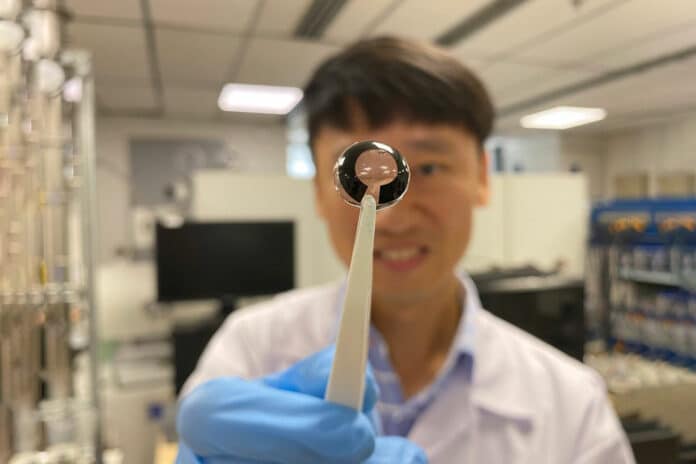Smart contact lenses are wearable devices that promise to provide wearers with both medical diagnostics and personal applications. These devices require miniaturized power supplies, with integrated batteries providing promising options.
However, conventional batteries contain various materials that could cause severe eye damage if leaked. Therefore, the development of safe batteries is necessary for smart lens applications.
To address this issue, researchers from Nanyang Technological University, Singapore (NTU Singapore) have developed a micrometers-thin, safe, tear-based battery powered by a saline solution that could power smart contact lenses.
“The most common battery charging system for smart contact lenses requires metal electrodes in the lens, which are harmful if they are exposed to the naked human eye. Meanwhile, another mode of powering lenses, induction charging, requires a coil to be in the lens to transmit power, much like a wireless charging pad for a smartphone,” said Dr. Yun Jeonghun, co-first author of the research.
The team’s proposed flexible battery is made of biocompatible materials and does not contain wires or toxic heavy metals. It has a glucose-based coating that reacts with the sodium and chloride ions in the saline solution surrounding it. And the water the battery contains serves as the wire or circuitry for electricity to be generated.
The 0.5 millimeters-thin battery generates electrical power by reacting with the basal tear fluid that coats our eyes. The flexible and flat battery discharges electricity through a process called reduction when its glucose oxidase coating reacts with the sodium and chloride ions in the tears, generating power and current within the contact lenses.
In lab tests, the NTU team demonstrated that the battery could produce a current of 45 microamperes and a maximum power of 201 microwatts, which they say is sufficient to power a smart contact lens. In its current form, the battery could be charged and discharged up to 200 times – by contrast, similar lithium-ion batteries typically have a lifespan of 300 to 500 charging cycles.
While the user’s tear fluid could help keep the lens running throughout the day, the researchers suggest that the battery should be placed for at least eight hours in a suitable solution that contains a high quantity of glucose, sodium, and potassium ions to be charged while the user is asleep.
In future work, researchers plan to improve the amount of electrical current their tear-based battery can discharge.
Journal reference:
- Jeonghun Yun, Zongkang Li, Xinwen Miao, Xiaoya Li, Jae Yoon Lee, Wenting Zhao, Seok Woo Lee. A tear-based battery charged by biofuel for smart contact lenses. Nano Energy, 2023; DOI: 10.1016/j.nanoen.2023.108344
